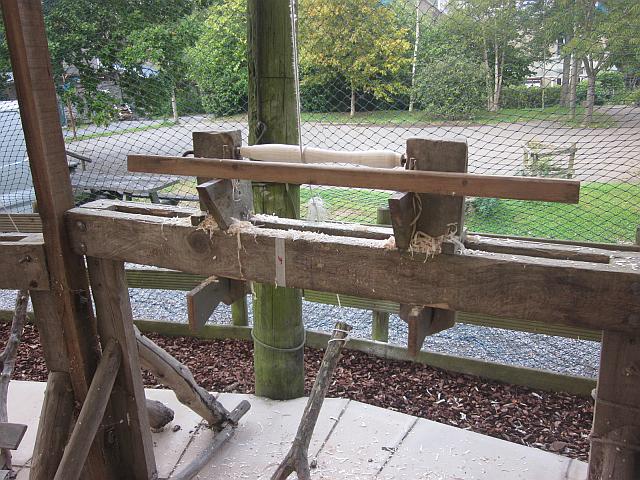Pole Lathe Turning
How did wood-turning work before the age of the electric
motor? The lathes were powered by a treadle and a springy
pole and wood was turned 'green' - often in the coppice woods where it had been felled.
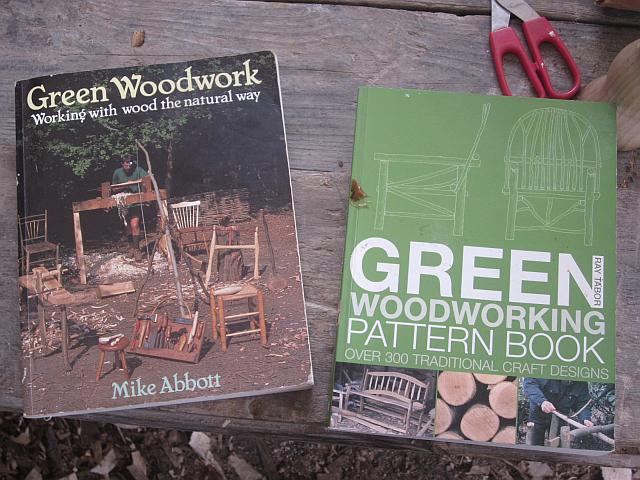
Devon Rural
Skills Trust held a
pole-lathe day at the South Devon Steiner School near Totnes on
September 19th. Maybe this is the best equipped
pole-lathe site in the U.K.
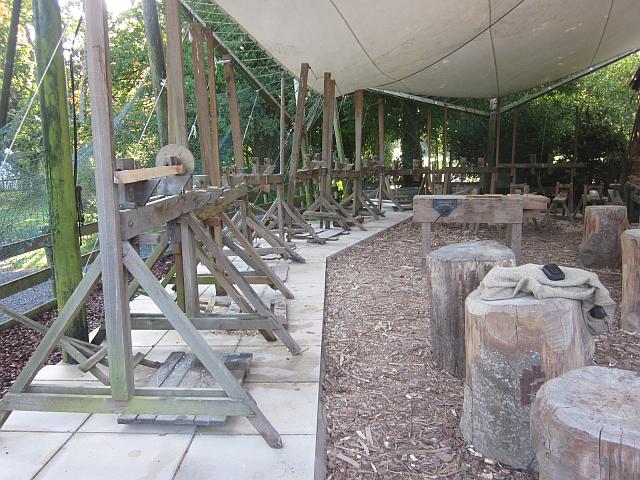
After selecting your piece of wood -hopefully straight-grained
and free from knots, you work on it with an axe to get it as round
in cross section as possible.
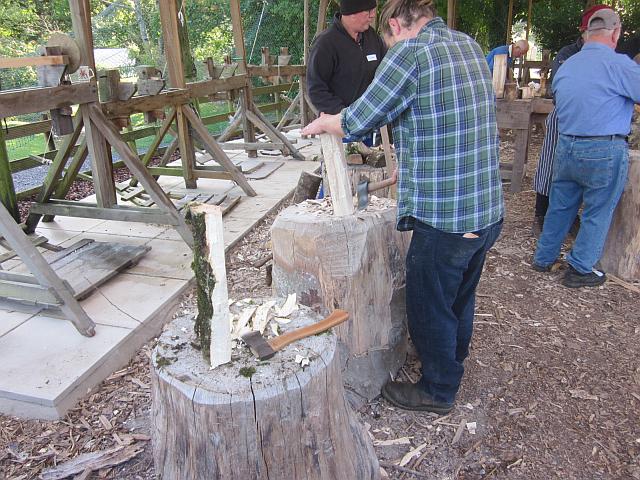
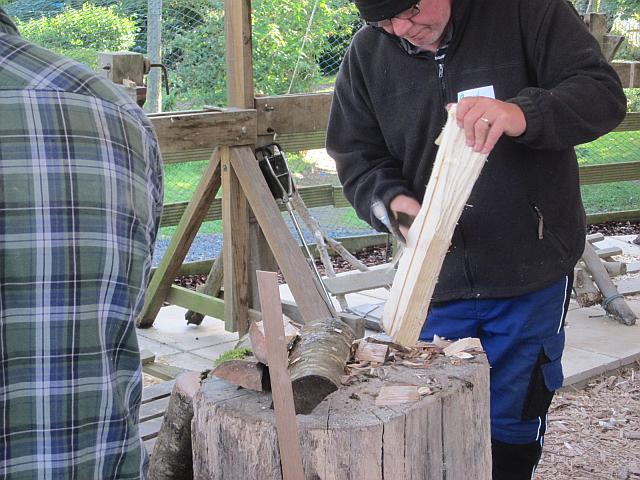
This process continues using a draw
knife on a shave horse. The aim is to reduce the
amount of work needed to be done on the lathe as much as
possible.
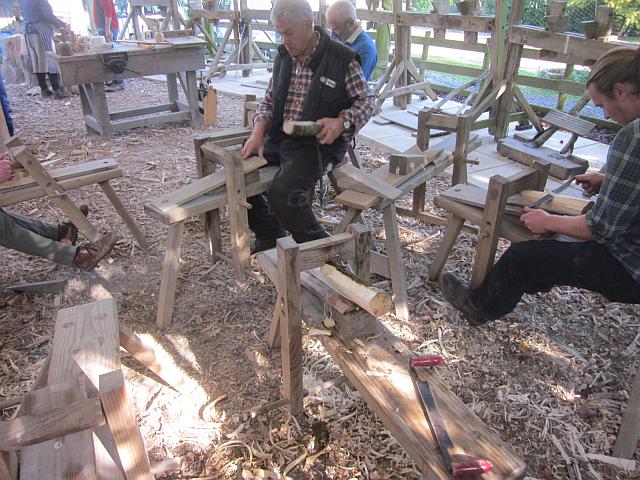
When this has been completed the work is set up on the lathe.
A string wrapped around the work turns the work when
the operator steps on the treadle and an elastic cord (used to be a
springy pole) returns the workpiece when the operator takes their
foot off the treadle.
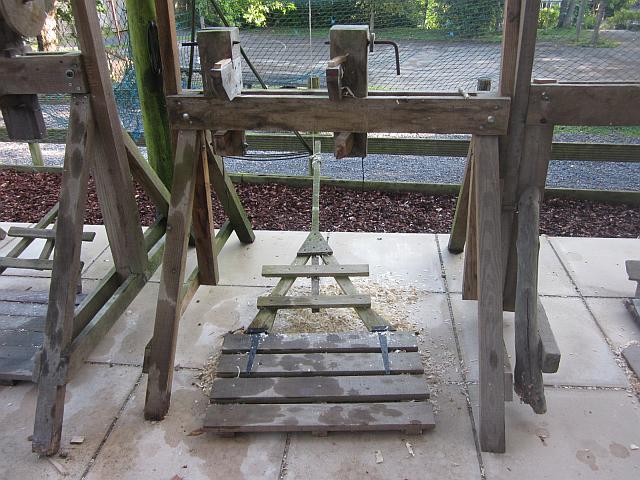
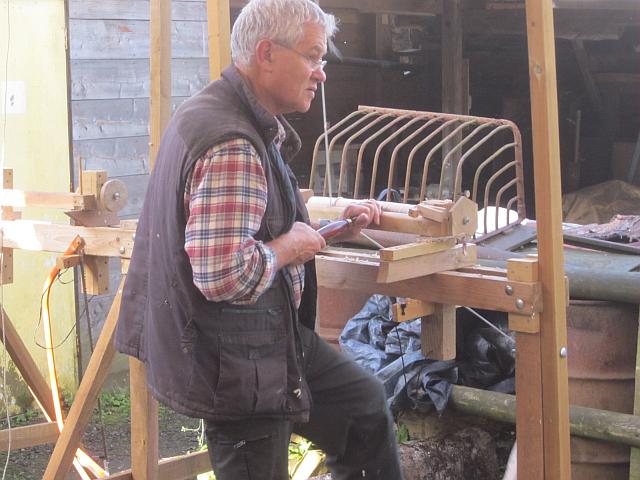
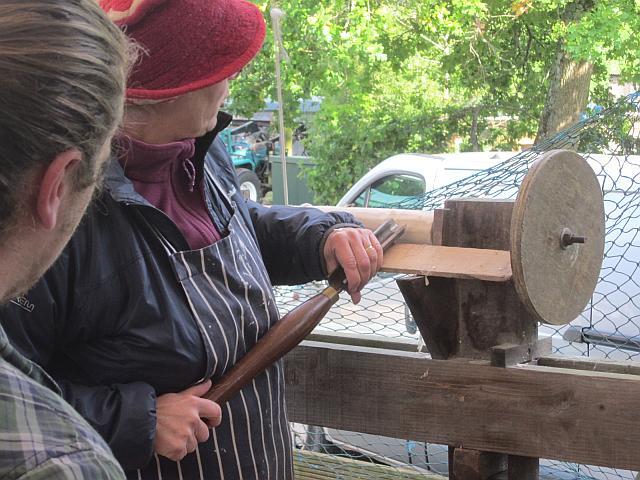
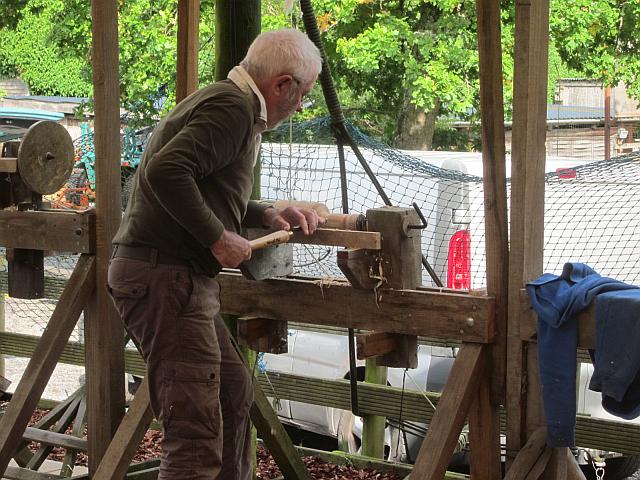
Gouges and chisels are used to shape the work.
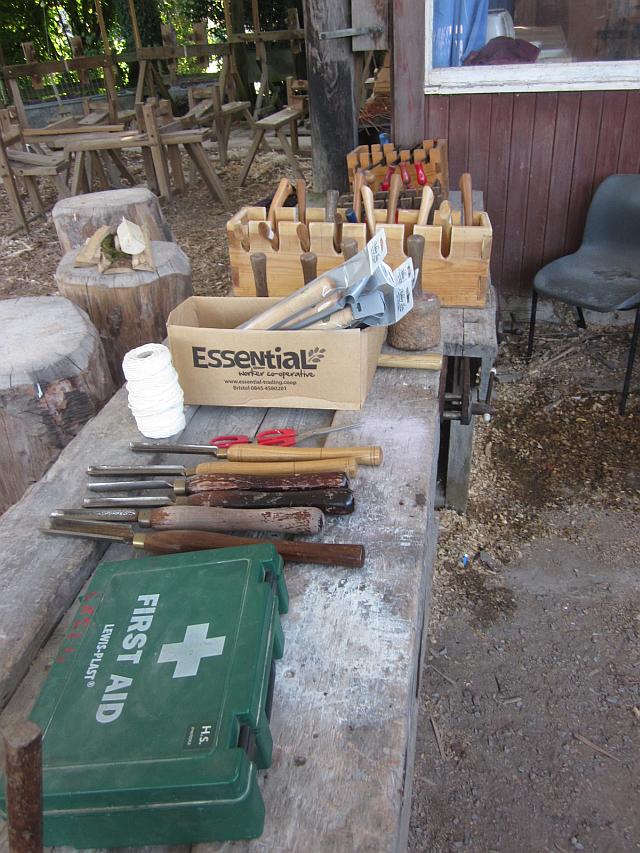
The beauty of the process is that the green wood is soft enough
to be worked without power tools - no noise, no pollution, no
fossil fuel use. This way of working may go back to Roman or
Saxon times in England and it continued commercially up to about
100 years ago with the wood workers living ine what were essential
Anglo-Saxon workshops in the woods.
Famously timber pieces were rough worked or 'bodged' in the woods
of the Chiltern Hills and then sent to the town factories nearby
(e.g. High Wycombe) to be made into Windsor chairs.
